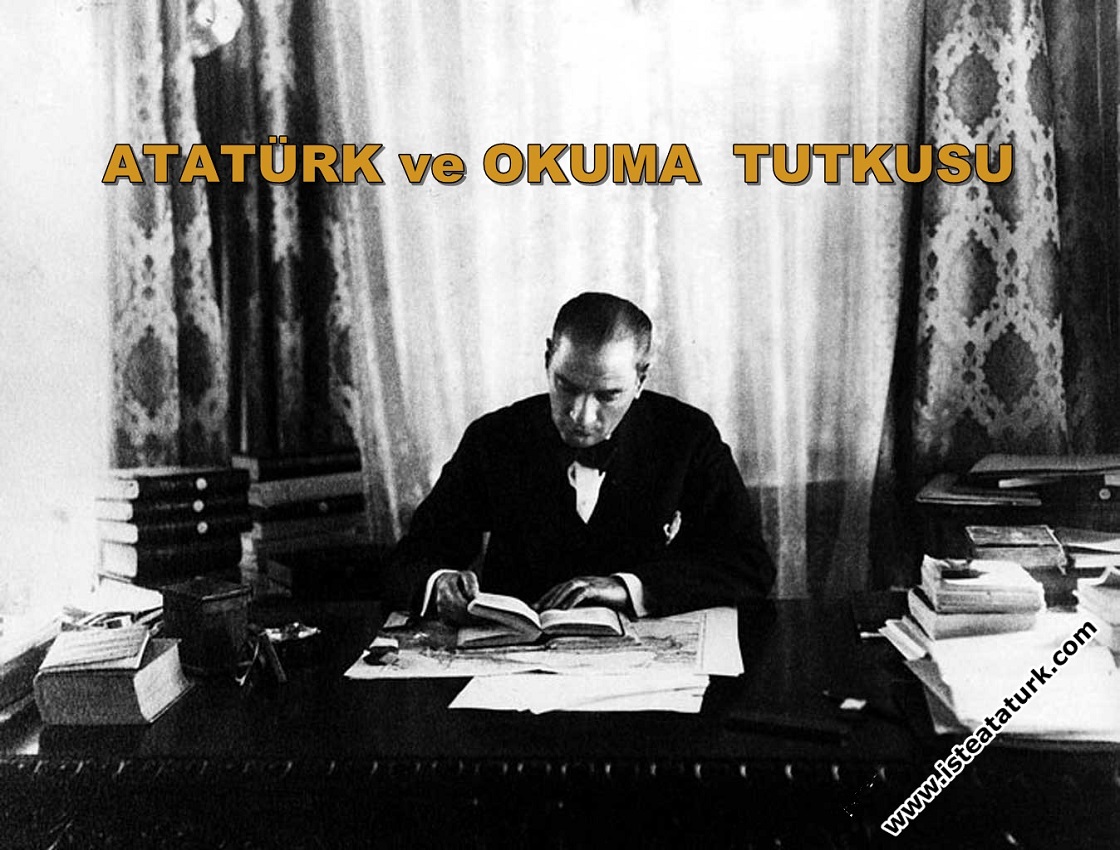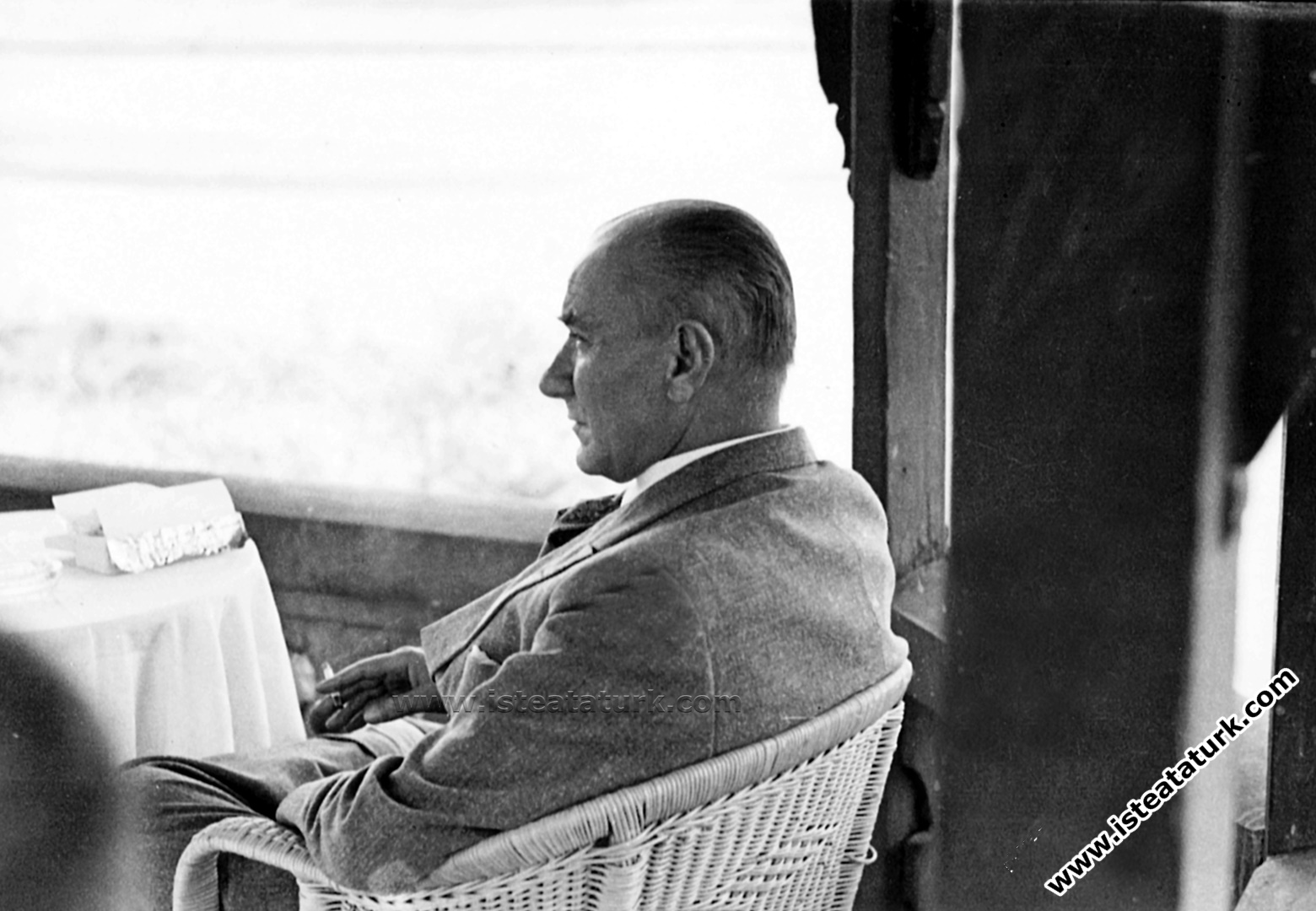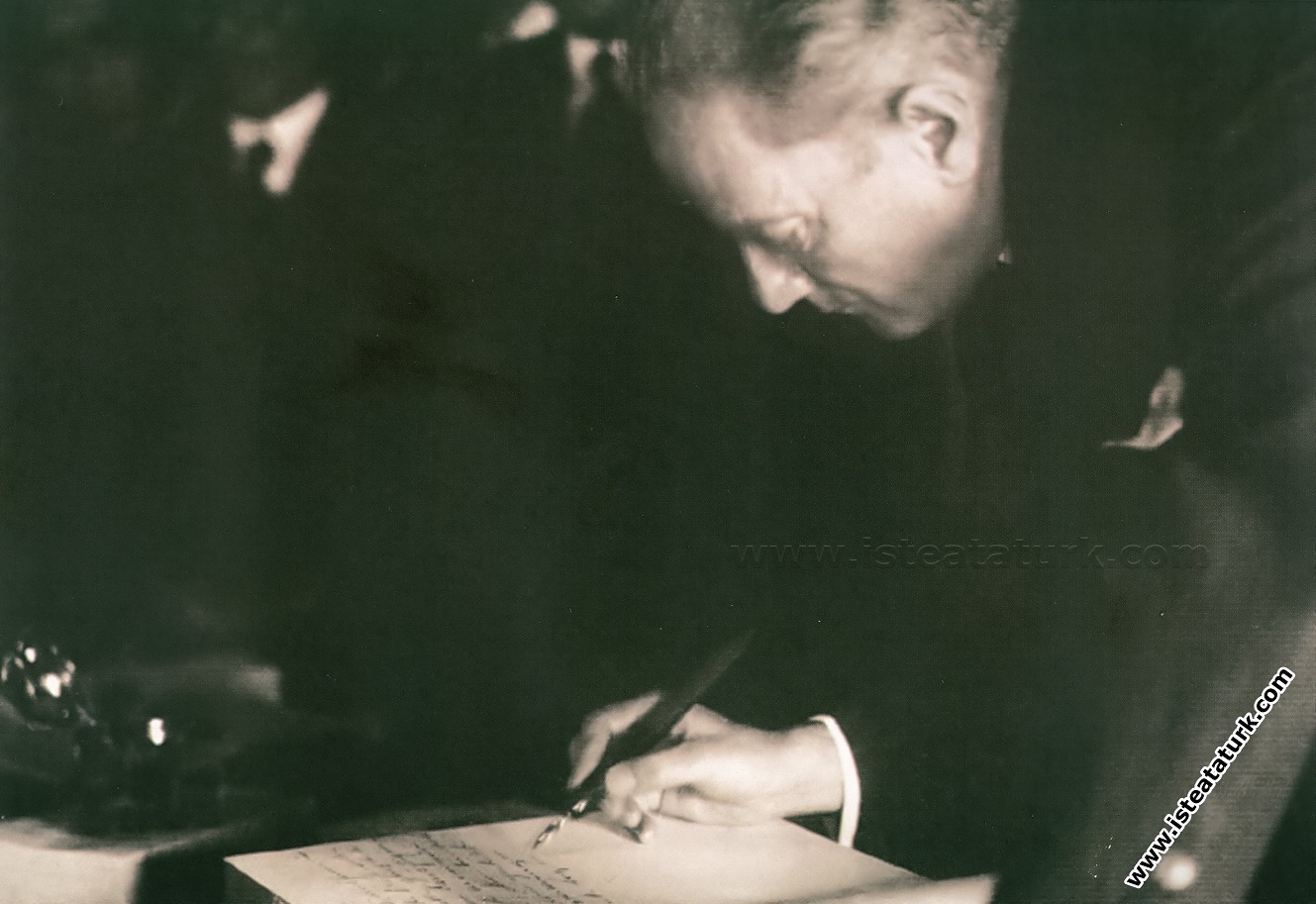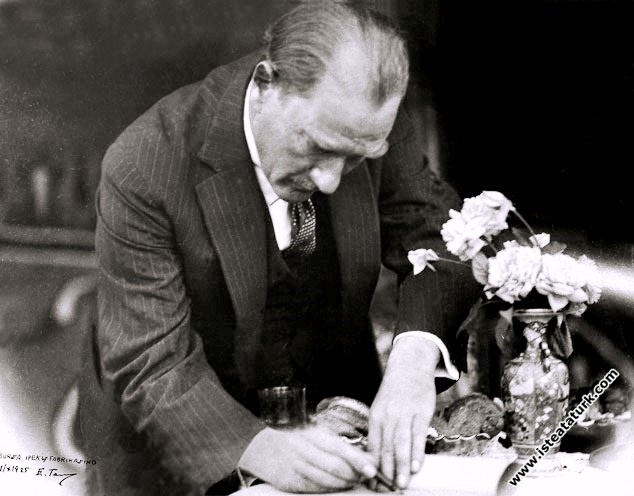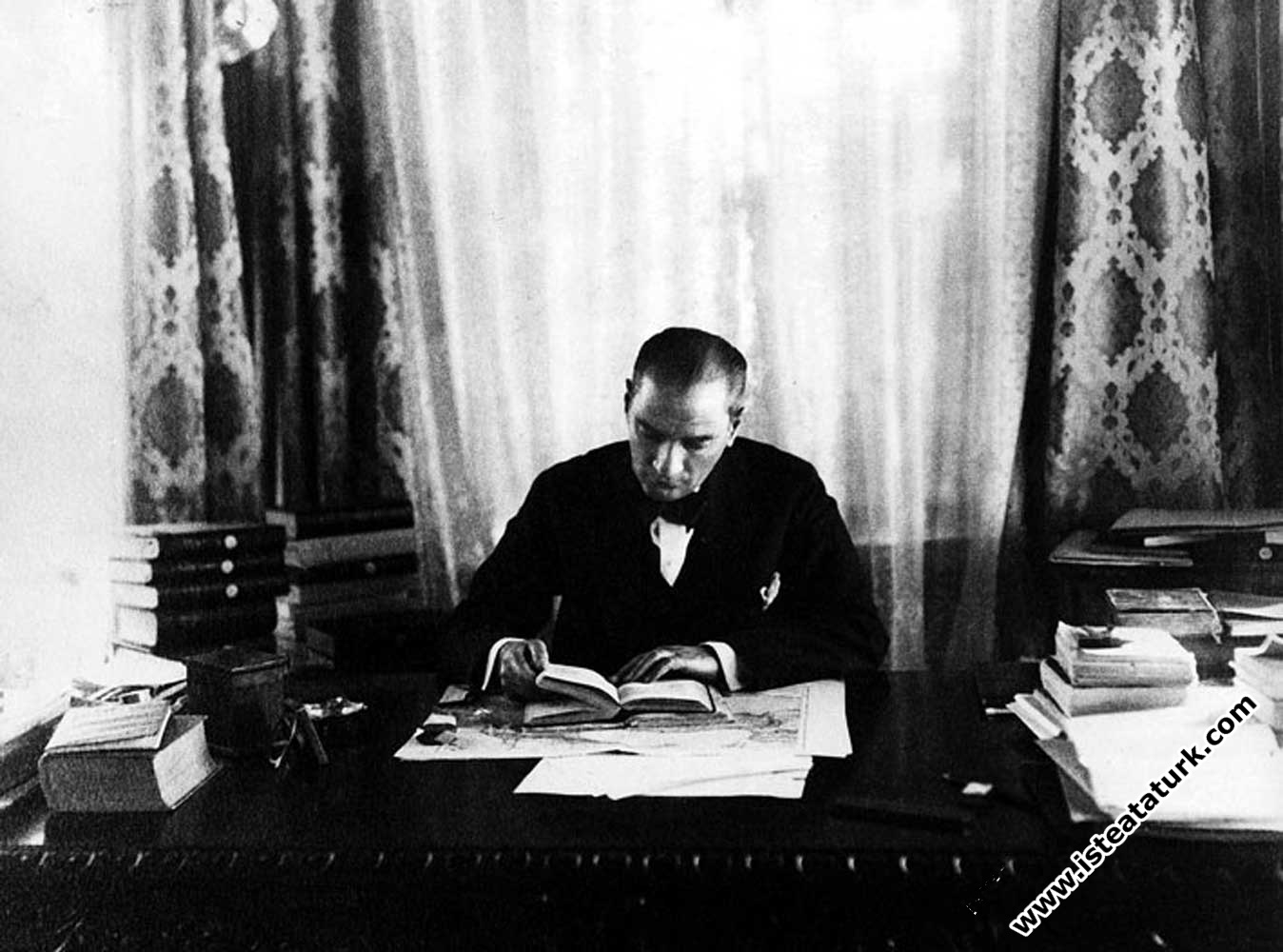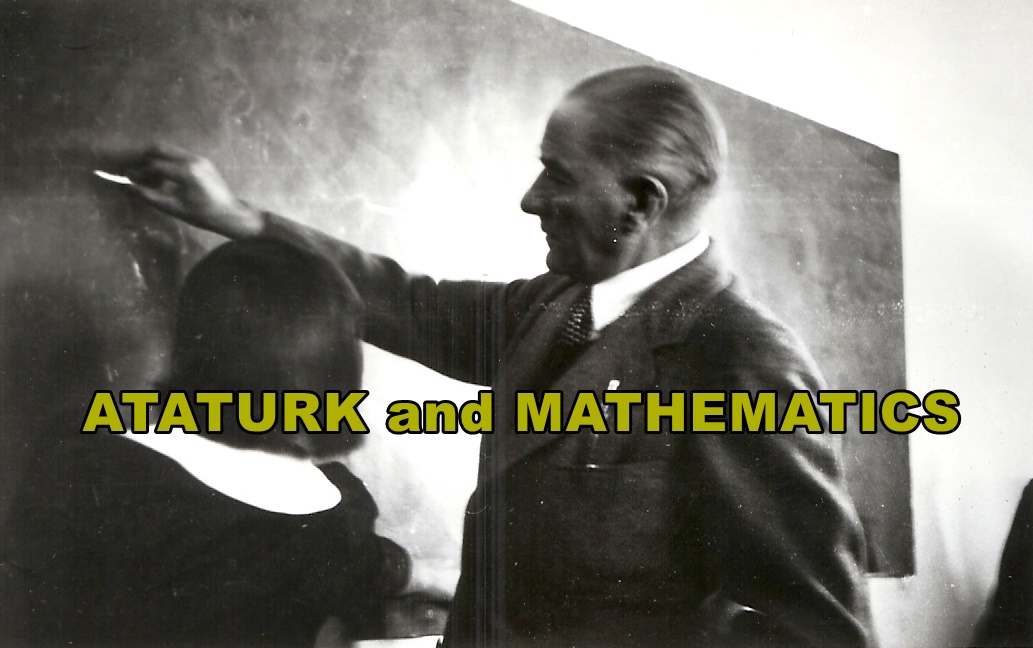
Atatürk and Mathematics
Character Size
“I have put a lot of emphasis on mathematics in the learning revolution and I can say that I have used it to achieve success in various phases of my life. Therefore, everyone should believe that knowledge of mathematics is very necessary.” Mustafa Kemal Atatürk
ATATÜRK and MATHEMATICS
Atatürk successfully continued the education and science war he started with the Turkish War of Independence until his last breath. Great success has been achieved with the breakthroughs made by the Great Leader in the field of education and science. One of the sciences that takes priority from these breakthrough movements is mathematics. Atatürk coined terms in this field of science, wrote a book, and personally pioneered the work of young people in this field of science.
Maths; It is a robust, useful universal language that enriches civilizations without knowing language, race, religion and country. It is indispensable for the individual, society, science and technology. It is a science, an art, whose scope and depth cannot be limited.
The ancient Greek word matesis is the root of the word mathematics and means I know.
It is derived from the word máthema , which later means science, knowledge and learning, respectively .
Mathematikós means one who enjoys learning.
In Ottoman Turkish, mathematics was called Riyaziye .
The word mathematics came to Turkish from the French word mathématique .
Atatürk's studies in the field of language opened new horizons in the field of Turkish education and science, and formed a cornerstone in the spread of education and science to the whole society. He continued the revolution he started with the New Turkish Alphabet in every field and aimed to develop the Turkish language in every platform. When we look at the revolutions he made in education in Turkish, Atatürk's work in the field of science is really worthy of praise. Mathematics has also taken its fair share from these studies.
See how it got the name of mathematics and how it became mathematics.
A moment at the Turkish Language Congress Committees;
Gazi now gave the greatest importance to term commissions. These commissions were using as much as they could from pocket guides, scans, compilations, the Divan... and other sources and inventing astonishingly many terms.
Gazi gave no orders to stop this way of working. But in the evenings, he was looking to instill sound principles in the commissions by speaking:
• The terms of Eastern (Islamic-Arab) culture will be discarded! Turkish equivalents of western terms will be searched.
• The Turkish equivalent to be found should be able to explain the concept of the Western term. Response will not be taken if it does not describe the concept of the term.
• Western term will be nationalized and taken with orthography in accordance with Turkish phonetics; this term will now be considered as Turkish and will be used in secondary and high school education.
Gazi could not review the long lists prepared by all commissions; didn't have time for that. He only took the terms of the riyaziye (mathematics) commission under his own control, had them discussed one by one and tried to determine the terms to be taken with Turkish spelling.
The first term was the word riyaziye. There was no correspondence to this term in the commission's list. The discussion started:
Gazi: "Where does Riyaziye come from, what does it mean?"
Chairman of the Commission: "Sir, it comes from riyazat, it means the strict diet of the devotees."
Gazi: "What's the Western term for this?"
Chairman of the Commission: "French is mathematique, English is mathematics, German is mathematik, sir."
Gazi: "What does it mean?"
The chairman of the commission: "It means the units that investigate the ways of counting and measuring things that can be counted and measured."
Gazi: "The devotees and dieters have no business here. The Turkish word for this term is mathematics ,
The term, after such discussion, was taken as mathematics. one
Mathematics enables people to think correctly, to analyze and synthesize. This is the key to success.
Atatürk's first extraordinary success in his life was in 1893, in his childhood, during his secondary education, in the mathematics course, and as a result, Captain Mustafa Bey, the teacher of the course, added the name "Kemal" to his name . Atatürk describes his memory of this incident in Thessaloniki Military High School as follows:
" ... I was most interested in mathematics at the high school. In a short time, I learned maybe more than the teacher who gave us this lesson. I was dealing with questions above the lessons, I was organizing written questions. The mathematics teacher was also giving written answers. My teacher's name was Mustafa, one day. he said to me:
- 'Son, your name is Mustafa, too. This will not be so, there must be a difference. From now on, let your name be "Mustafa Kemal". Since then, my name has truly become Mustafa Kemal.”
When we examine Atatürk's life, we see the following picture. The National Liberation War, which was opened and won against imperialism, the establishment of the New Turkish State and the Turkish Revolutions that followed. In short, a life lived for the sake of creating a modern country. Atatürk has achieved many successes and firsts in his fifty-seven-year life. I think the secret was hidden in his mathematical intelligence. In other words, he planned everything he was going to do in advance and did it on time and in place.
We see the extent to which Atatürk dealt with mathematics in an article by the Turkish Language Institution Chief Specialist Agop Dilaçar, dated 10.11.1971.
Agop Dilacar explains: "Atatürk wrote the Geometry book with his own hand, one and a half years before his death, in the Dolmabahçe Palace during the winter months of 1936-1937,
right after the Third Turkish Language Congress.
He sent it to Haşet Kitabevi in Beyoğlu and sent one of the French Geometry books that we deemed appropriate to be bought. After these were reviewed together with Atatürk, the general design of the Geometry book to be written was drawn. After a while, I left and Atatürk worked on this work during the winter months. The geometry book is the product of this labor. ” 4
Atatürk prepared this after reading some French geometry books and the work was first published in 1937 by the Ministry of Culture as a guide for those who teach geometry and those who will write books on this subject .
In this 44-page work , triangle, quadrilateral, pentagon, diagonal, equilateral, isosceles, parallelogram, lateral, trapezoid, space, surface, level, diameter, radius, cross section, arc, circle, tangent, angle, bisector, interior angle, exterior angle Terms such as , base, oblique, dimension, fracture, plumb, horizontal, vertical, congruent, position, plus, minus, multiply, divide, equal, total, ratio, proportion, derivative, area, assumption, justification were coined by Atatürk .
The well-known linguist Agop Dilaçar, who had the opportunity to closely follow Atatürk's language studies, says the following about Atatürk's geometry book:
“Atatürk always dealt with mathematics. The old geometry terms were very viscous. Even I have read these terms for a long time, but now I better understand your difficulty in the face of it. There is a truth in pedagogy: the path of ideas must be clear and a clue must be found. Otherwise it will collapse like a nugget. Let's take the word muselles. Arabic has been removed from our schools. How can the learner know that it is a free (derived) word from thuluth? Arabic is a kneading language. For example, oriental is a word that comes from the word orient. Some syllables have been added in front of it, in the middle, and behind it. Finding its origin is a matter of Arabic grammar. Since Arabic and Persian have been removed from our schools, the learner will see “müselles” as a mass word. "Three" won't come to mind. But if we say triangle instead of müselles, there is a three “Gen”, According to Atatürk, it was taken from “width”. There is a clue "The Quadrant", it came from the four. There's a hint. Equal comes from mate, which means equal. But equal is an Arabic word. For this reason, Atatürk's principles were correct here as well. He took up this most rudimentary branch of science for him and left the book as an example.”
He also examined the effects of Atatürk term studies in the country, actually. He visited many schools in the country, primarily taking mathematics classes and observing the success of the students in the lesson. In 1937, the Minister of Culture Saffet Arıkan, the Minister of Interior Şükrü Kaya, Sabiha Gökçen, İsmail Hakkı Tekçe and his aide Naşit Mengü attended Sivas High School with a delegation. In the 9-A class of the high school, he entered the geometry course (then hendese) in the program. He had the student on the board. When the student had difficulty in saying the Arabic names of the angles formed by the intersection of two parallel lines drawn on the board with two other parallel lines and made mistakes, Atatürk, who was affected by the situation, reacted. “With these incomprehensible Arabic terms, students cannot be informed. Lessons should be explained in Turkish with new terms”He took the chalk in his hand, using the new Turkish terms such as 'angle' for 'zaviye ', 'edge' for 'dili ', 'triangle' for 'müselles ', with drawings on the board, and explained some geometry issues, meanwhile the Pythagorean theorem . . 6
_%201%20(2)(1).jpg)
_%203a(2).png)
In geometry class in 9-A class at Atatürk Sivas High School . (November 13, 1937)
Atatürk describes the place and importance of mathematics in his life with these words: “I have put a lot of emphasis on mathematics in the learning revolution and I can say that I have used it to achieve success in various phases of my life. Therefore, everyone should believe that knowledge of mathematics is very necessary.”
It is possible to see Atatürk's passion for mathematics and his inclination towards the digital world in the ferment of his victories throughout his life.
Dr. Tuna Yılmaz
1. Ahmet Cevat Emre, History of Two Generations, pages: 339-340
2. Captain Mustafa Bey: He is Atatürk's Mathematics teacher in Thessaloniki Military High School. Sensing his student's talents, he nicknamed him Kemal. In this way, he determined his different and superior status from himself and his friends, and provided him with a constant incentive to go towards the better and the more beautiful.
3. He took the surname "Dilaçar" because of his contributions to Mustafa Kemal Atatürk's studies on Turkish.
4. Agop Dilâçar, “Foreword” of the book “Geometry”, Turkish Language Association Publication, 1981, page:5 5.
Geometry, Turkish Language Association Publications / Atatürk Series: 4.Turkish Historical Society Press, Ankara, 1971, page:5 -7, I.
6. Ömer L. Örnekol's Memoirs, Journal of Science and Technology, November 1982, issue: 180
